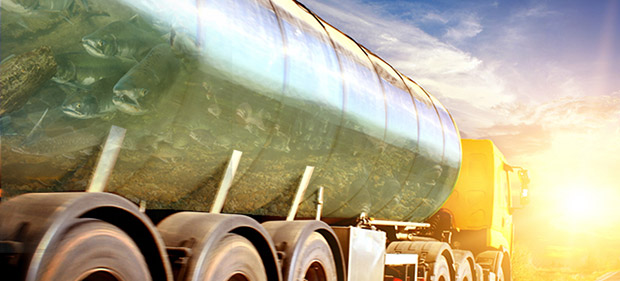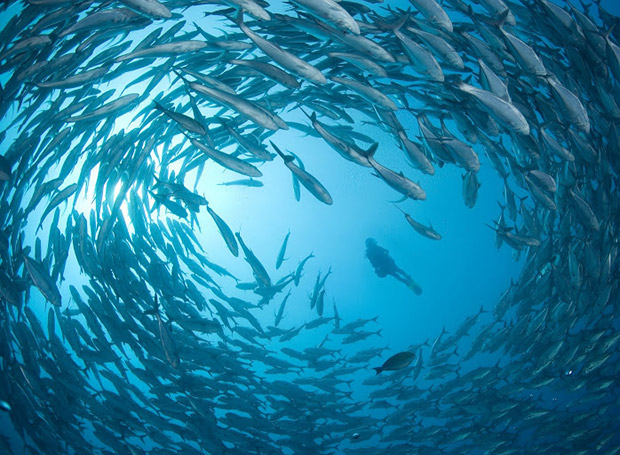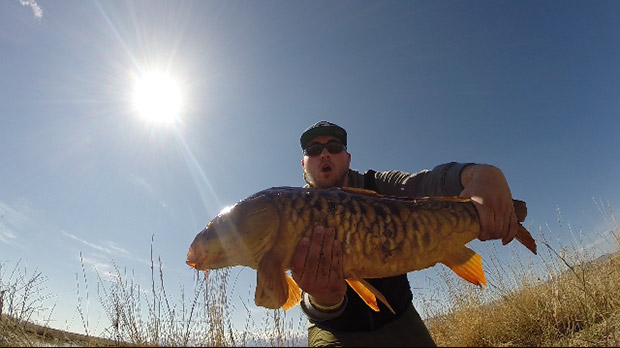
Shrunken habitat could deplete food supply for the young fish, and make them easier prey for predators. It also would make the water warmer, which can be lethal to salmon.
“The conditions may be so poor as to produce unacceptable levels of mortality for the out-migrating juveniles,” said Bob Clarke, fisheries program supervisor at the U.S. Fish and Wildlife Service.
Clarke’s agency operates Coleman National Fish Hatchery on Battle Creek, a tributary of the Sacramento River near Red Bluff. It is the largest salmon hatchery in the state, producing about 12 million fall-run Chinook salmon. The hatchery was built to atone for habitat losses caused by construction of Shasta Dam.
Coleman hatchery salmon are usually released into Battle Creek in April and May. Fishery experts prefer to release young fish into rivers so they imprint on the location as “home” and are better able to migrate back from the ocean for spawning three to four years later.
Fall-run Chinook salmon from the Sacramento River and its tributaries compose the bulk of the wild-caught salmon available in California markets and restaurants, and also feed a lucrative sport-fishing industry. In total, these fish represent a multibillion-dollar slice of the state’s economy each year.
California is experiencing one of its driest winters on record. Despite the recent storms, the Sierra snowpack that the state relies on to replenish its reservoirs remains depleted. Without an unusually wet March – and the long-term forecast calls for predominantly dry weather – officials fear rivers may be so diminished in April and May that young salmon will not survive their migration to the ocean.
They are also concerned that water diversions from the Sacramento-San Joaquin Delta during a low-water year could slaughter many of these young salmon, which measure about 6 inches long. Water pumped out of the Delta by state and federal agencies serves 25 million people from Napa to San Diego.
The trucking plan, devised by the state and federal fisheries agencies, includes a series of triggers, based on river and water supply conditions, that would launch a massive operation to haul the salmon in tanker trucks on a nearly three-hour drive from Red Bluff to San Pablo Bay near Vallejo. There, the salmon would be released into floating net pens to acclimate to new salinity and temperature conditions, then set free to swim for the ocean.
The California Department of Fish and Wildlife is adopting similar plans for its hatcheries on the Feather, American and Mokelumne rivers. Each produces several million young salmon every year.
Historically, the state hatcheries have trucked a significant share of their salmon, even in normal water years, to protect them from pollution, predators and water diversions. More recently, the state began shifting some salmon to in-river releases following evidence that trucked fish are more prone to “stray” into the wrong river when they return to spawn as adults. This harms the unique genetic traits of each river’s salmon species.
The department is in the midst of a multiyear study to evaluate the effectiveness of trucking versus in-river releases on salmon survival and migration. It also includes use of a barge to transport hatchery salmon. Aboard the barge, salmon are protected from predators and water diversions but experience the gradual changes in water temperature and chemistry that occur with a self-powered migration.
With trucking, by comparison, the salmon experience a kind of shock when suddenly released into the bay, which can make them more vulnerable to predators.
This year’s salmon trucking plan is similar to one carried out in the drought of 1991-92. Officials view it as a one-time program to protect salmon during severe drought, not a change in hatchery policy. They’re prepared to scrap the plan if the coming weeks bring significant rain.
“We don’t want to truck them down if conditions aren’t going to be as bad as we think they’re going to be,” Clarke said.
Officials developed the plan in consultation with the fishing industry, which has been pressing for the trucking plan for weeks.
“What this means is we’ll likely have a much better salmon fishing season in 2016, when these fish reach adulthood, than we would have otherwise gotten,” said John McManus, executive director of the Golden Gate Salmon Association.
Read more here: http://www.sacbee.com



